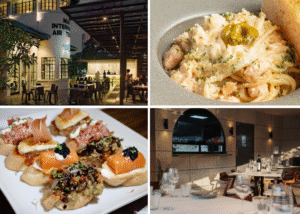Maximizing Restaurant Profits in the Philippines: A Guide to Efficient Online Delivery Systems
The restaurant industry in the Philippines has witnessed a remarkable transformation with the rise of online delivery. Integrating local food delivery platforms Philippines like GrabFood and Foodpanda has become essential for restaurants aiming to expand their reach and boost profits. This guide explores how Philippine restaurants can overcome common delivery challenges using efficient online delivery systems to maximize their success.
The Rise of Online Delivery in the Philippine Food Industry
Online food delivery has experienced explosive growth in the Philippines, accelerated by shifts in consumer behavior due to the pandemic. Platforms such as GrabFood and Foodpanda Philippines dominate the market, offering convenience and variety to customers nationwide. Restaurants that embrace these platforms and optimize their delivery operations stand to benefit from increasing demand and changing dining habits.
Consumers today expect speedy, reliable delivery combined with quality food. To meet these high standards, restaurants need to adopt more efficient online ordering system solutions that go beyond generic delivery options.
Common Restaurant Delivery Challenges in the Philippines
Many restaurants face persistent issues that hamper their delivery operations and profitability. Understanding these restaurant delivery challenges is the first step towards improvement.
Managing Multiple Food Delivery Platforms
Handling orders separately from GrabFood, Foodpanda, and other aggregators can be chaotic. Manual processing leads to errors, missed orders, and inefficiencies that affect service quality.
Order Cancellations and Customer Satisfaction
Frequent cancellations damage a restaurant’s reputation and reduce profits. Customers expect accurate order fulfillment, and any lapses can result in lost trust and repeat business.
Maintaining Timely Deliveries and Food Quality
Delayed deliveries or food arriving in suboptimal condition frustrate customers. Ensuring food quality during transit and prompt delivery is a complex but critical challenge.
Benefits of an Integrated Online Ordering System
Implementing an integrated online ordering system benefits restaurants by streamlining operations and enhancing customer experience.
Centralized Order Management
A unified dashboard consolidates orders from GrabFood, Foodpanda, and others, simplifying order tracking and reducing management overhead.
Real-Time Reporting and Performance Monitoring
Live data on delivery times, cancellations, and customer feedback enable restaurants to make informed decisions and quickly address issues.
Reducing Order Errors and Cancellations
Automation decreases human error in order processing, minimizing cancellations and improving accuracy, which positively impacts customer satisfaction.
Implementing Efficient Delivery Systems: Best Practices for Philippine Restaurants
To maximize the advantages of online delivery, restaurants should consider the following best practices.
Selecting the Right Delivery Technology Partners
Choose technology partners like Klikit or other online ordering systems that seamlessly integrate with local delivery aggregators. Look for platforms offering intuitive interfaces and robust support to suit Philippine F&B needs.
Training Staff for Seamless Online Order Fulfillment
Equip your team with proper training on new systems and workflow adjustments to ensure timely and accurate order processing.
Leveraging Data to Improve Customer Experience
Use analytics from your ordering system to optimize menus, tailor promotions, and improve delivery times, thereby enhancing customer loyalty and profitability.
Case Study: Successful Online Delivery Integration in a Philippine Restaurant
One mid-sized restaurant in Metro Manila implemented an integrated OMS connected with GrabFood and Foodpanda. By centralizing orders and automating workflows, they reduced cancellations by 30% and improved delivery timeliness, leading to a 25% increase in monthly profits and higher customer satisfaction ratings.
Conclusion: Future-Proofing Your Restaurant Delivery in the Philippines
As the online delivery market in the Philippines continues to grow, restaurants must overcome delivery challenges to stay competitive. Adopting an integrated online delivery system, connected to major local platforms, streamlines operations, reduces errors, and enhances customer experience—ultimately maximizing profits and future-proofing your business.
Embrace technology solutions that cater to local conditions and consumer expectations to unlock your restaurant’s full potential in the thriving online delivery landscape.
Frequently Asked Questions
What are the key challenges Philippine restaurants face in online delivery?
Philippine restaurants often face challenges such as managing orders across multiple food delivery platforms like GrabFood and Foodpanda, handling frequent order cancellations, dealing with delayed deliveries, and maintaining food quality during transit.
How does an integrated online ordering system benefit restaurants using GrabFood and Foodpanda?
An integrated system allows centralized order management from multiple platforms, offers real-time reporting on delivery performance and customer feedback, reduces order errors through automation, and improves overall customer satisfaction by streamlining delivery operations.
Can integrating multiple delivery platforms really improve restaurant profits?
Yes, integrating platforms increases efficiency, reduces cancellations and errors, and improves customer experience, all of which contribute to higher profit margins by boosting order accuracy, timeliness, and repeat business.
What should Philippine restaurants consider when choosing an OMS or POS system?
Restaurants should look for systems that integrate seamlessly with local platforms like GrabFood and Foodpanda, provide an easy-to-use interface, offer real-time order and performance data, and support features that help reduce cancellations and improve order accuracy.



